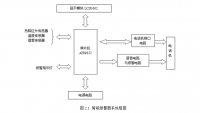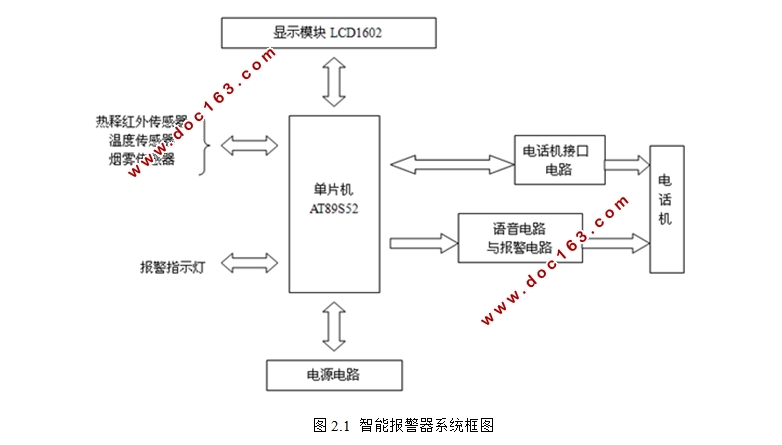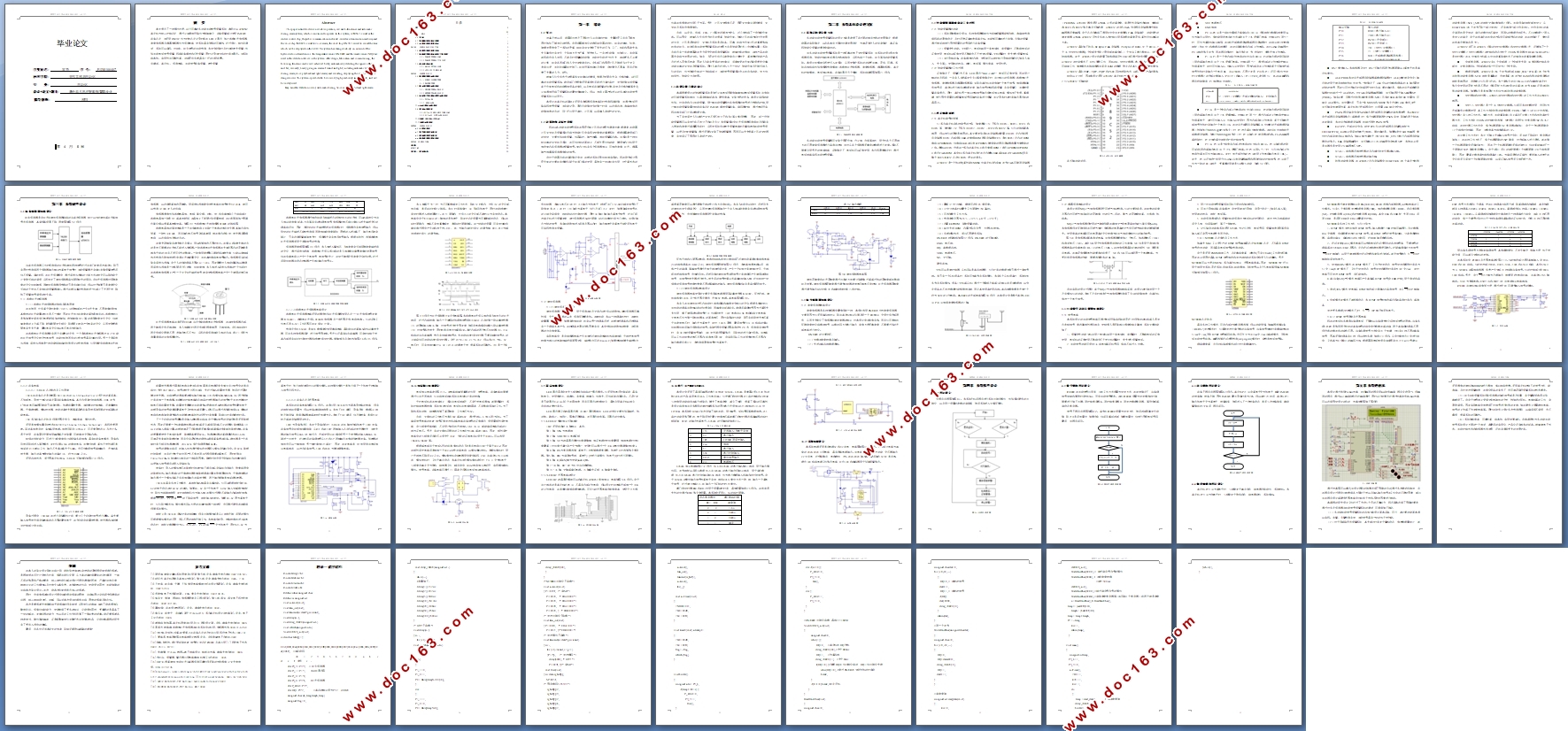基于单片机的智能报警器设计

基于单片机的智能报警器设计(任务书,开题报告,外文翻译,论文18000字)
摘 要
本文提出了一种操作方便、运行可靠的多功能自动拨号报警系统,本设计以AT89S52单片机为核心控制芯片,通过公共通信网络作为传输媒介,语音报警部分使用ISD1420语音芯片,并采用DS1302作为时钟芯片记录时间在LCD上显示,加之热释红外传感器、温度传感器及烟雾传感器作为探测电路,使系统具有很强的可靠性。经过设计、制作及调试,系统可以实现:对防盗、防火信号的自动检测;当发生险情时及时启动声光报警(包括自动电话拨号报警、现场语音播放和灯光报警)同时记录该时刻的时间并显示。该系统成本低、实用性与可靠性高、功能灵活多样,具有广泛的应用前景。
关键词:单片机 ;探测电路;自动拨号语音报警;声光报警
Abstract
This paper intends to device a reliable operation, call multi-functional and automatic dialing alarm system, which is convenient to operate. In this system, AT89S52 is used as the central control chip, the public communications network is used as a transmission medium, and the voice chip ISD1420 is used to voice alarm, the clock chip DS1302 is used to record the time which will be displayed on the LCD. The system has strong reliability on account of the hydroelectric infrared sensor,the temperature sensor DS18B20 and the smoke sensor MQ-2 are used as the detection devices in the system. After design, fabrication and commissioning, the following functions can be well achieved: firstly, automatically detecting the signals of theft and fire; secondly, timely giving an alarm of sound and light ( including automatic telephone dialing alarm, voice playback and light alarm) and recording, displaying the alarm time when dangers occur. This system is predicted to be low cost, high practicality and reliability, and will be widely used. [资料来源:http://www.doc163.com]
Key words: Detection circuit; Automatic dialing; Voice alarm;Sound and light alarm
[来源:http://www.doc163.com]



目录
摘 要 I
Abstract II
第一章 绪论 1
1.1引言 1
1.2发展趋势及历史背景 1
1.3本设计的目的及意义 2
第二章 系统总体设计的方案 3
2.1系统总体设计的方案 3 [资料来源:Doc163.com]
2.2智能报警器的功能及工作过程 4
2.2.1智能报警器的功能 4
2.2.2智能报警器的工作过程 4
2.3单片机的选择 4
2.3.1单片机型号的选择 4
2.3.2 AT89C52引脚功能 5
第三章 系统硬件设计 9
3.1防盗探测器电路设计 9
3.1.1热释红外线探测器 9
3.1.2微波探测器 13
3.2防火探测器电路设计 15
3.2.1温度探测器电路设计 15
3.2.2烟雾探测电路的设计 17
3.3自动拨号及语音报警电路设计 17
3.3.1拨号电路 17
3.3.2 语音电路 20
3.4电话接口电路设计 23
3.5显示电路设计 24
3.5.1LCD1602模块接口引脚功能 25
3.5.2 LCD1602外围电路的设计 25
3.6串行 EEPROM-X25045 26 [版权所有:http://DOC163.com]
3.7系统电源设计 27
第四章 系统软件设计 28
4.1主程序设计 28
4.2拨号模块程序设计 29
4.3语音模块程序设计 30
4.4摘挂机模块程序设计 30
第五章 系统的仿真 31
致谢 33
参考文献 34
附录一 程序清单 35
[版权所有:http://DOC163.com]
